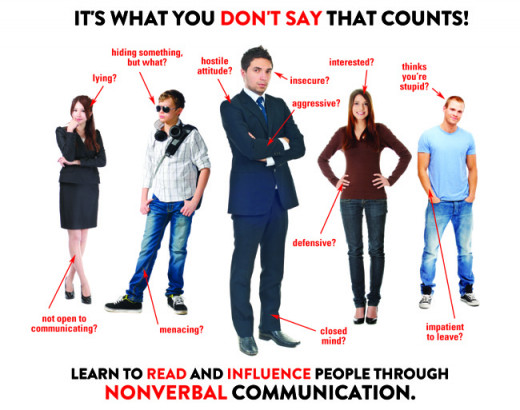Cultural Differences And Body Language


Culture plays a very important role in non verbal communications, which can be seen to others as a normal attitude or an insult, depending on one's cultural background. Apparently, we live in a world filled with diverse and multifarious cultures, which is the major source of different non verbal ways of communication. Non verbal communication simply means the act of generating information such as facial expressions, gestures, and postures, which is being interpreted by the receiver as a coded language or a message. As perceived researchers, non verbal communication also known as body language, is the most effective and powerful means of communication, which is virtually understood by different people irrespective of their nationality. According to scientific research and study, it has been proven that even animals understands body language, which has mostly being observed in dogs and other house pets. This means of communication can be perceived in different ways, for instance, when a man glances at his watch in the middle of a conversation, that simply means his time is being wasted or he's actually tired/bored.

"Never ask a woman if you may kiss her; instead learn to read her body language," says Neil Strauss. Body language is a very powerful mechanism of communication, which is apparently eighty percent(80%) of what we understand in a conversation. It has been said that a person saying the truth will always express his feelings by demonstrating with his hands, whereby a person telling a lie will always keep his hands still while talking. The original study of body language pioneered by Birdwhistell was called kinesics, he estimated that humans can recognize and also make about 250,000 facial expressions. All this demonstrates the effectiveness of non verbal communication.


In reference to my country, Nigeria, bowing of heads and prostrating are the two major ways of greeting elderly people which obviously portrays a sign of courtesy. Doing so in other foreign countries may be seen as something strange or unusual. The United States is a country popularly known for its diverse cultures due to the great population of foreigners residing there. The cultural diversity in the United States has given room for the practice of different body languages, which people from other countries try as much as possible to adapt to. Such actions like, touching, hugging, and kissing, are less frequent and publicly displayed. I find China's culture quite fascinating. There are body languages used to depict their emotions and feelings. For instance, when a chinese hits his chest, it indicates a strong affection of love or anger, which is used to denote some sort of assurance, confirmation or guarantee. All other countries, either big or small also possess different ways of communicating non verbally with respect to their culture.
Body language is a very essential and important means of communication which the deaf and blind can understand in certain circumstances. Non verbal communication has been seen to contain emblematic and precise meanings correlative to verbal communication. The differences of culture can often lead to miscommunication between people who did not mean to offend themselves. This form of communication is not only used in respect to culture, but also as a coded language between gangs, groups, families, friends and ties. Non verbal communication is a global phenomenon that can never be overlooked.
Facts About Body Language
(1). When people see what they don’t like, feels threatened or unhappy, they squint their eyes.
(2). When we raise our eyebrows, it means we are contemplating on what we’re listening to and mildly intrigued.
(3). Giving a direct eye contact means being interested, focused or listening.
(4). Blinking consistently means we’re nervous or anxious
(5). Fingertips touching conveys we’re thinking and that we’re about to make a decision or move.
(6) Putting your hands with your thumps backward on your hips and elbows out displays dominance or authority.
(7). When we cross our feet when standing or sitting down, it shows that we’re comfortable or relaxed, but sometimes also defensive.
(8). Shaking your legs means you’re anxious, scared or impatient
(9). Tilting your head and smiling means flirting or being playful
(10). Lowering your head means you’re ashamed of something, shy or have something to hide.
(11). Looking to the sideways means you’re distracted or that you’re submitting a paper
(12). Eyes seemed far away means deep thought or dosing off.
NB: All these facts are not necessarily true for all human beings, it might vary among different people.
Body Language Do's and Don'ts









